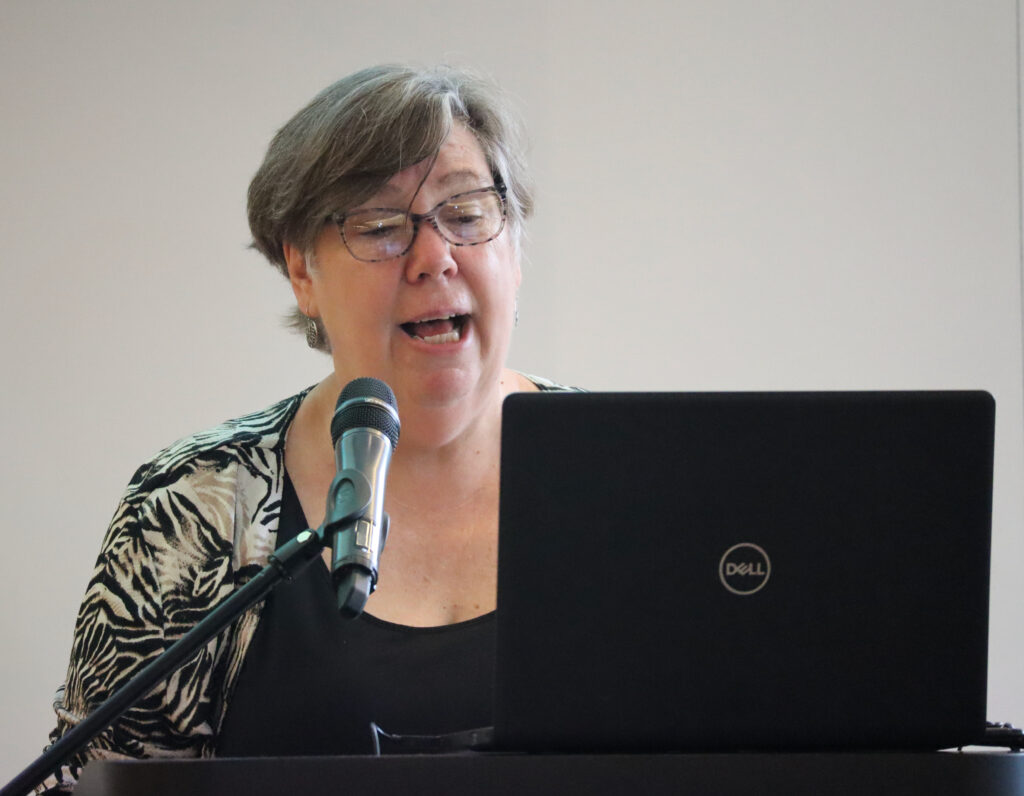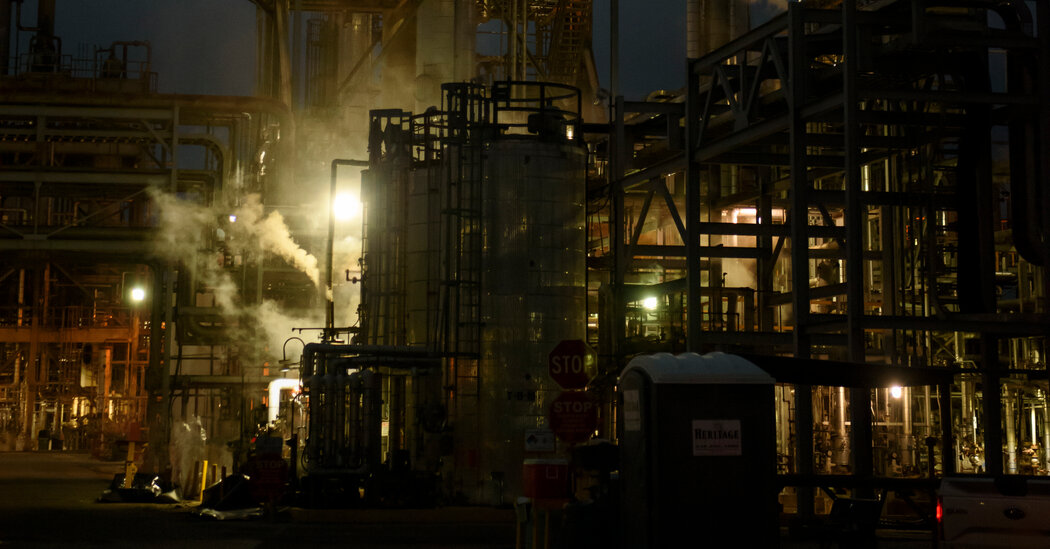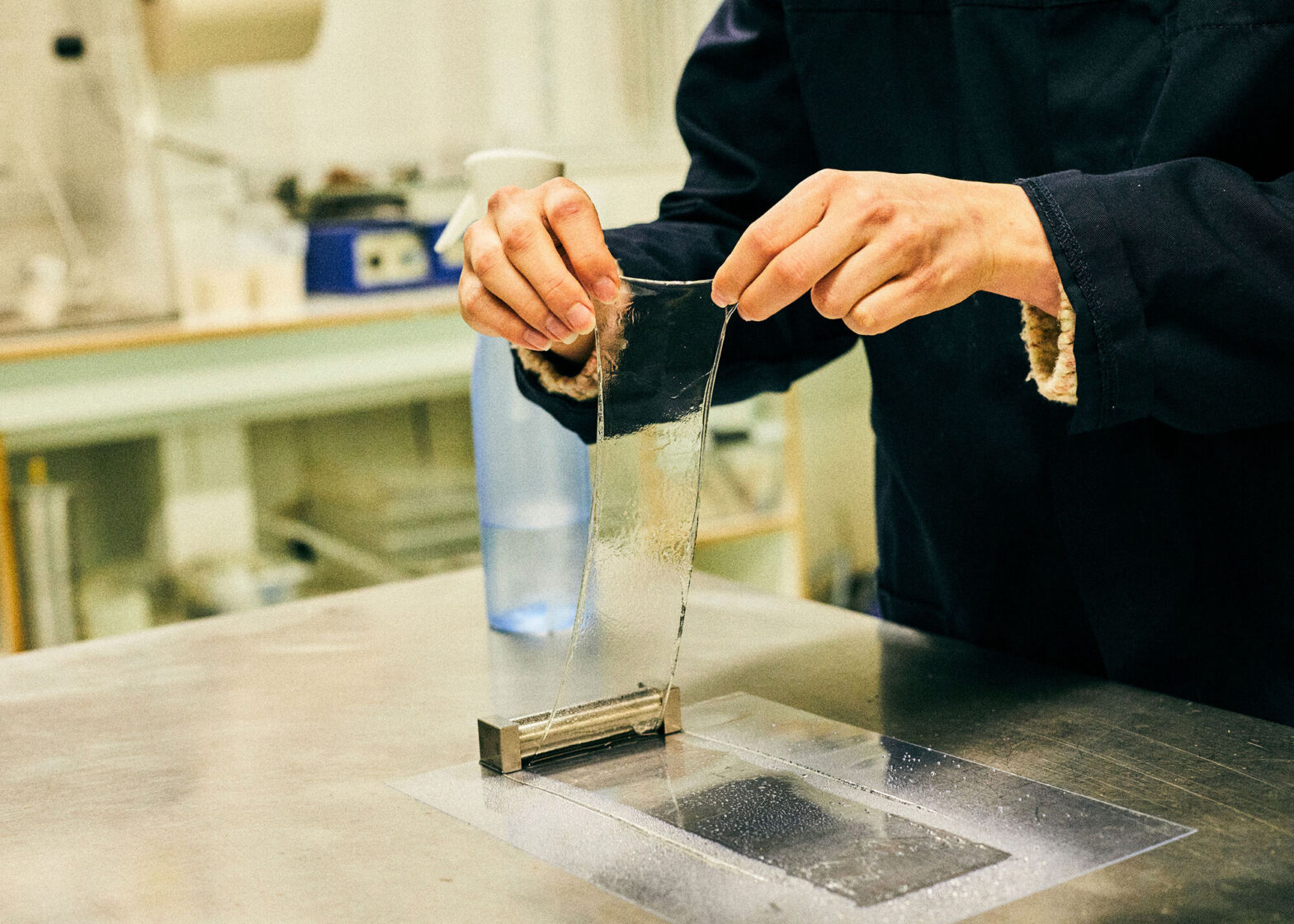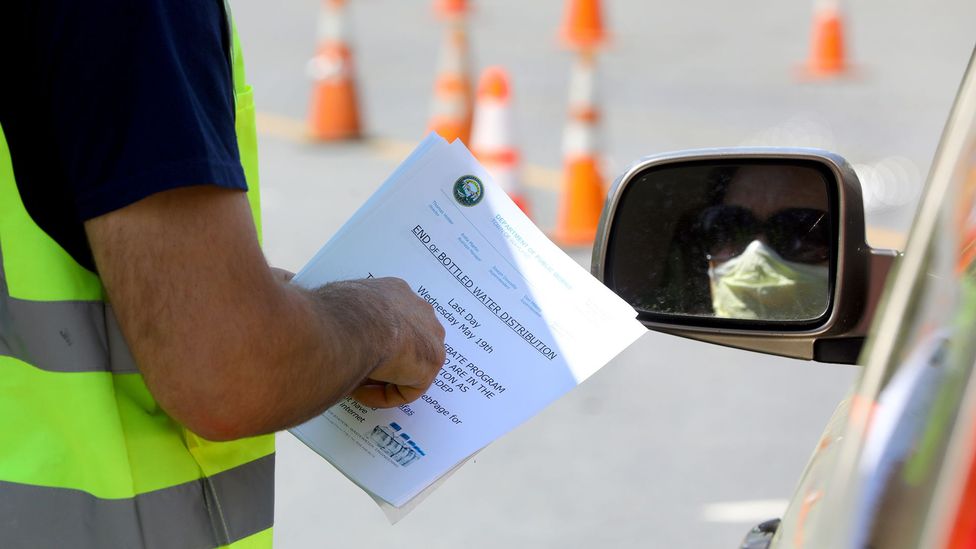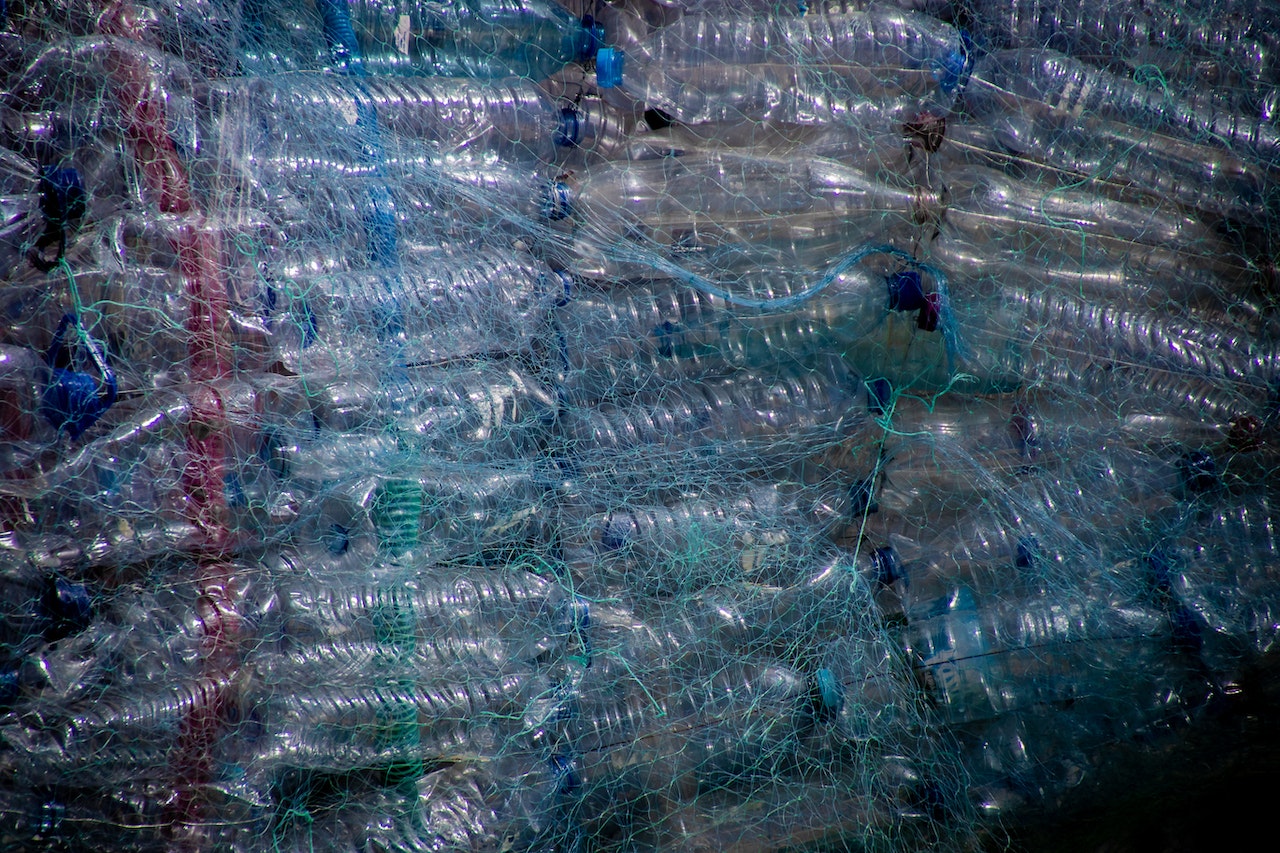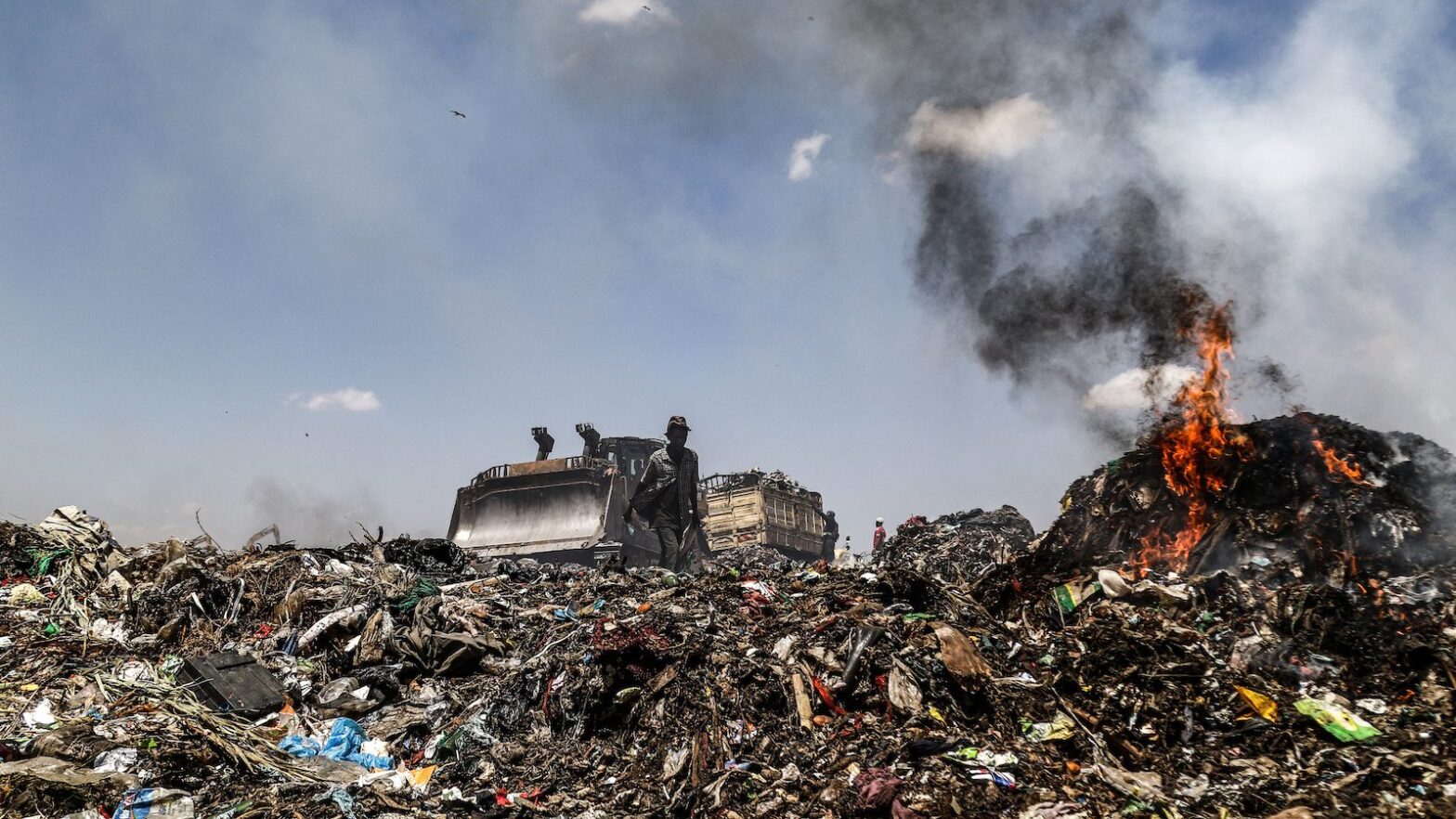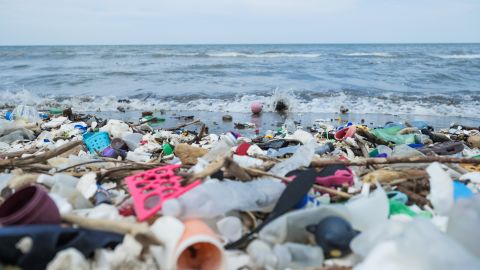Outrage over last month’s Norfolk Southern train derailment in East Palestine, Ohio, continued this week as former regional Environmental Protection Agency administrator Judith Enck called on the agency to ban vinyl chloride, the cancer-causing chemical at the center of the disaster.
Enck, in an interview on Thursday, said the goal of a petition from the environmental group she leads, Beyond Plastics, is to stir up reform following the Feb. 3 derailment, which prompted emergency crews on Feb. 6 to vent five rail cars of vinyl chloride—a flammable and toxic gas used to make polyvinyl chloride (PVC) plastic—and set the chemical on fire to prevent a shrapnel-laden explosion in the small town near the Pennsylvania state line.
Residents have since complained of headaches and nausea, and expressed concerns about long-term health consequences, dead fish in local waterways and reduced property values.
“We want to phase out vinyl chloride so we don’t have any more East Palestines,” said Enck, the founder and president of Beyond Plastics. “We are going to do a grassroots campaign. The science is so solid.”
Judith Enck, founder and president of the environmental group Beyond Plastics, speaking at a Bennington College seminar in August. Credit: James Bruggers
A vinyl chloride ban, Enck said, “is the one positive thing that can come out of this.”
Enck, of New York, served and oversaw the EPA region that includes New York, New Jersey, Puerto Rico, U.S. Virgin Islands and eight Indian nations during the Obama administration. She founded Beyond Plastics in 2019 and teaches at Bennington College in Vermont.
The American Chemistry Council, a lobby group for the chemical and plastics industries, did not return a request for comment. However, the organization’s president and chief executive officer, Chris Jahn, released a statement on the derailment late last month.
“People are understandably concerned and question why we ship chemicals, including those that are classified as hazardous materials,” Jahn said. “We ship them because they are needed across the country and essential to everyday life. Chemicals are critical to providing safe drinking water, ensuring a plentiful food supply, producing life-saving medicines and medical equipment, and generating many types of energy.
“The impact of the derailment on the community of East Palestine underscores the need for a constant focus on safety. We must strive to meet the daily needs of the nation while delivering materials safely.”
A preliminary report from the National Transportation Safety Board found the derailed equipment included eleven tank cars carrying hazardous materials that were subsequently ignited, fueling fires that damaged an additional 12 non-derailed railcars. First responders called for a one-mile evacuation zone, affecting up to 2,000 residents. NTSB partially blamed an overheated wheel bearing for the derailment of the 149-car train.
Vinyl Chloride and Environmental Justice
A ban on vinyl chloride would effectively get rid of PVC, a major building material for the construction industry, commonly used in siding and windows. It’s also found in products such as floor tiles, roofing, tents, toys, pipes and food packaging. The European Council of Vinyl Manufacturers touts PVC as a solution to food waste because it’s flexible and tough, and, in the form of containers or films, seals out water or oxygen.
PVC, which some critics have called the worst kind of plastic, contains a variety of chemical additives, such as phthalate plasticizers, some of which are blamed for disrupting the human endocrine system. In the United States, the Food and Drug Administration has limited the use of some but not all phthalates in food packaging, due to health and safety concerns.
Last month, Dr. Philip Landrigan, a pediatrician, epidemiologist and director of Boston College’s Global Public Health Program and Global Observatory on Planetary Health, told Inside Climate News that PVC had problems at every stage of its lifecycle, beginning with potential dangers to workers who make it. Researchers in the 1970s first linked vinyl chloride occupational exposure to a rare form of cancer—angiosarcoma of the liver—to rubber workers at a factory in the Rubbertown complex of chemical plants in Louisville, Kentucky. Landgrand said there was evidence it may also cause brain cancers and that toxic ingredients in PVC may “leach out of plastics products and get into drinking water or blood products.”
The Beyond Plastics petition, also backed by the Hip Hop Caucus, a nonprofit that encourages young people to participate in the democratic process, observed that in 1974, the Consumer Product Safety Commission banned vinyl chloride as an aerosol in consumer products, and FDA has banned its use in cosmetics.
“Burning vinyl chloride may create and release dioxins,” among the most toxic chemicals, and can cause cancer and disrupt the hormonal, reproductive, developmental and immune systems, the petition states. “Vinyl chloride is also often produced in low-income communities and communities of color—a clear violation of environmental justice. We do not want to see another East Palestine toxic train disaster occur. It is within your authority to act and we are counting on you to protect public health and the environment.”
EPA has ‘Sweeping Authority’
The petition collected 10,000 signatures in its first week and more people are adding their names every day, Enck said.
EPA’s authority to review the health and safety of chemicals like vinyl chloride and decide whether their use should be restricted or banned falls under the Toxic Substances Control Act, which was amended and signed by President Barack Obama in 2016 after widespread acknowledgment that the original law from 1976 had been a failure. In 2013, the Government Accountability Office reported that of the thousands of chemicals listed for commercial use in the United States, EPA had used its authority to limit or ban just five since TSCA was first enacted.
The EPA, first under President Trump and now under President Biden, has been working its way through chemicals requiring review under the revised TCSA. EPA began with a list of ten chemicals to review for safety and potential restrictions, and the agency has yet to make final determinations on them.
“The existing chemical program gives EPA pretty sweeping authority to protect the public, up to and including a total ban on a chemical,” said Tosh Sagar, an attorney with Earthjustice, an environmental law organization that closely follows TSCA.
Keep Environmental Journalism AliveICN provides award-winning climate coverage free of charge and advertising. We rely on donations from readers like you to keep going.Donate Now

